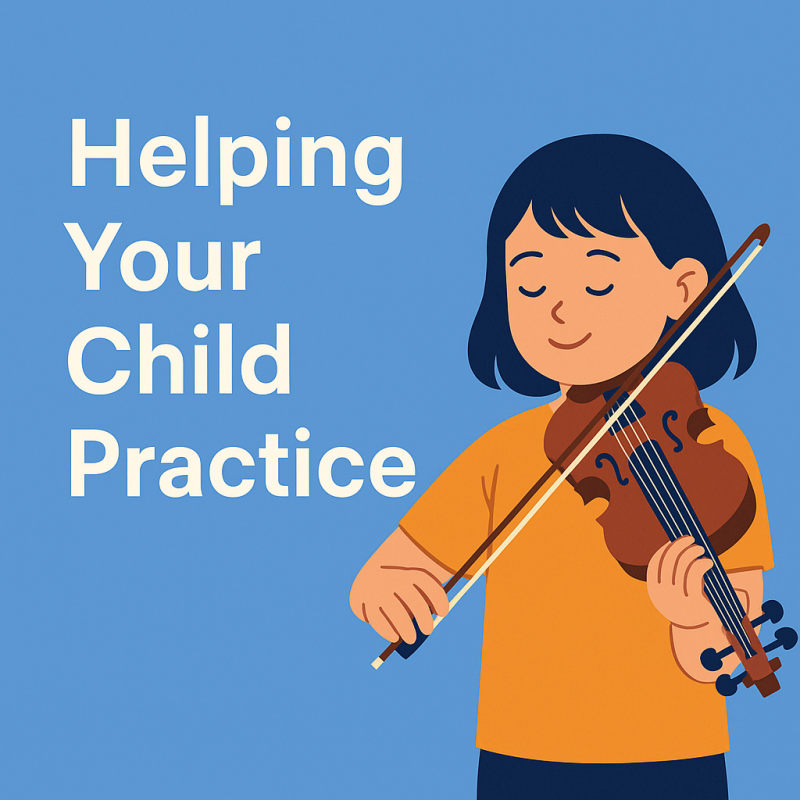As a teacher working with many young musicians and their families, I often introduce parents to the Suzuki Method—a unique and nurturing approach to learning an instrument that emphasizes the role of the parent, the power of listening, and the importance of early education. This method isn’t just about music; it’s about developing character, discipline, and joy through a shared journey between child, parent, and teacher.
Whether your child is just beginning or you’re exploring options, understanding the Suzuki philosophy can help you become an active and encouraging part of their growth.
🎻 What Is the Suzuki Method?
Founded by Japanese violinist and educator Dr. Shinichi Suzuki, the Suzuki Method is based on the idea that musical ability is not an inborn talent but can be developed in any child. Just as children learn to speak their native language by listening, repeating, and practicing, they can learn music the same way—with the right environment and guidance.
Core Principles of the Suzuki Method:
- Early Beginning: Children can start as young as 3 or 4 years old.
- Listening Before Reading: Like language, music is learned by ear first—reading music comes later.
- Daily Practice and Listening: Repetition and immersion are essential.
- Parental Involvement: Parents are active partners in every step of learning.
- Positive Reinforcement: Encouragement and praise build confidence.
- Group and Individual Lessons: Both formats help develop skills and community.
👨👩👧👦 The Parent’s Role in Suzuki Learning
Your role as a parent in the Suzuki Method is much more than just providing transportation to lessons. You become what we call the “home teacher.” Here’s what that means in the early stages:
1. Be an Active Participant
At lessons, parents are encouraged to observe, take notes, and learn alongside the child. This doesn’t mean you need to be a musician—but it does mean you’ll be guiding home practice based on the teacher’s instruction.
📌 Think of yourself as a coach who helps your child practice in a fun, structured, and supportive way.
2. Establish a Listening Routine
Daily listening to Suzuki recordings (and other music) is essential. Your child learns to internalize the sound and rhythm of the pieces long before they play them.
- Play recordings at home during meals, in the car, or during playtime.
- Make it part of your child’s daily soundscape—just like language development.
3. Create a Consistent Practice Environment
Young children need routines. Practice should be short, focused, and frequent—every day is ideal, even if just for a few minutes. Your presence makes all the difference.
- Set a regular time for practice.
- Reduce distractions and make it a calm, enjoyable part of the day.
- Keep tools like rosin, tuner, or music stand in one place.
4. Celebrate Progress, Not Perfection
Your child will have good and not-so-good days. Praise effort over outcome.
- “I love how focused you were just now!”
- “You held your violin beautifully today!”
This builds confidence and encourages a growth mindset.
5. Model Patience and Encouragement
As your child builds fine motor skills and musical awareness, the pace may be slower than you expect. That’s okay.
🌱 Dr. Suzuki believed in “small steps for small feet.” Every repetition is planting a seed.
🧩 Working as a Team: Teacher, Parent, Child
The Suzuki triangle—teacher, parent, child—relies on consistent communication and mutual support. Trust the process, keep in touch with your teacher, and be open about challenges at home. This is a journey of growth for all three corners of the triangle.
Final Thoughts
Learning an instrument the Suzuki way is a deeply rewarding experience that goes far beyond musical ability. It’s about building character, discipline, and a lifelong appreciation for beauty and expression. Your involvement as a parent in the early stages is not just helpful—it’s essential.
With your love, encouragement, and steady presence, you’re not just helping your child play an instrument—you’re helping them build the foundation for who they will become.




